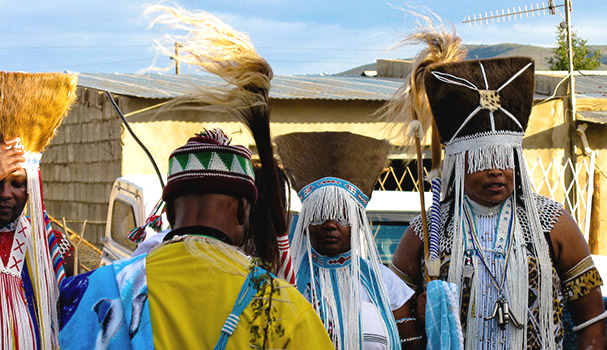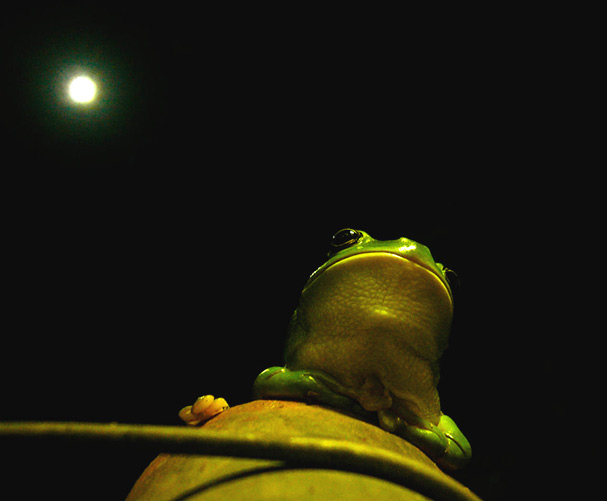The belief that certain animals may appear as a sign or omen to foretell an undesirable event (e.g. death) is widespread. Such perceptions may lead to the relentless persecution of the ‘offending’ species. Are roots of this malpractice inherent in traditional cultural knowledge or is it a more recent phenomenon linked to loss of connection to nature and culture?
While completing research on meaningful nature experiences, I encountered several persons, particularly natural scientists, who objected to cultural beliefs that propagated the idea that the appearance of a creature at a meaningful moment could serve as a ‘sign’ for certain events to follow. Their frustration was that such perceptions were leading to the indiscriminate killing of vulnerable and endangered species across Southern Africa.
Animals as omens is relatively accepted among more traditional non-Westernized cultures. I was first exposed to its potency when spending time with Aboriginal Australians over a decade ago. Experiences there forced me to reflect upon such notions more seriously than I had ever done previously.
Visitations by certain birds are said to carry importance to Aboriginal groups, both as environmental indicators and spiritual insight. Research has been carried out within Indigenous communities to document such knowledge. In addition to reading Native American accounts, I have experienced firsthand such beliefs when visiting parts of Asia, the Americas and in Southern Africa when spending time with persons from Khomani San (e.g. with the praying mantis) and amaXhosa communities (e.g. with the Nile monitor lizard).
This kind of animism also featured in early European cultures (e.g. Pagan, Celtic systems of thought), and it is little surprise that certain animals are still ‘charged’ with symbolism and feed our starved psyche’s need for meaning. Even today, in popular Western literature, there is a proliferation of modern ‘self-help’ books and online sites showing how animals can be used as guides to support personal development (e.g. “Birds: Divine Messengers , “What’s Your Sign?“)
Why? That’s another exploration. In short, much has been written in anthropological literature and explanations and interpretations abound: e.g. the close relationships and observation of nature for physical survival also source psychological inspiration and expression; that such perceptions tap into Man’s vast repository of collective archetypal symbols rooted in animate Nature; or that such beliefs fulfill our innate need to find meaning and patterns in nature and to seek affiliation with (desirable) traits of animals… whether out of dominion and fear (biophobia) or love and kinship (biophilia).
But the fact is that thousands of animals are killed every year in Southern Africa due to the meaning bestowed upon them, whether out superstition, for traditional medicine (e.g. muti) or for ritual (e.g. the wearing of wild cat skins in ceremony). This exasperates conservationists who deplore such actions given the increasing threat it poses to species’ survival.
So I wanted to know whether I should join the chorus and denounce the cultural beliefs outright or whether something more complex and subtle was at play.
My mind harked back to an information display at Sabi Sabi in Kruger National Park which highlighted the widespread persecution of owls in South Africa. Using shocking imagery of these ill-fated birds, the supporting text decried their large-scale massacre across many parts of the country’s rural areas. Many South African cultures perceive it as harbinger of bad luck. It is said that if an owl is sighted on the roof of your or a relative’s house then someone in the family will soon die.
But it was not the cultural interpretation that I found immediately troubling but rather whether ascribing such a meaning automatically implies the slaughtering of the animal involved.
Was this how it has always been? Was this practice always embraced by these cultures or is this a more recent phenomenon suggesting an erosion of the traditional cultural knowledge instead?

I asked a Xhosa friend – a local Christian minister and now also a sangoma, i.e. spiritual diviner (I find this co-existence of belief systems fascinating). He told me that animals take on different meaning for different people in a community depending on what their totem animal is. If that particular animal were to cross their path then, yes, it is true, some people seek to kill it. But he immediately clarified that that is not how it was meant to be.
What then?
I asked another Xhosa gentleman – a park ranger – who whilst not a sangoma himself, comes from a family with a strong lineage of traditional healers and diviners. After interrupting his reading of the Bible in his remote peaceful field station, he took time to offer an explanation:
“Some of the people they are associated with the elephant. Some of the people are associated with the leopard. Some people interact with animals, and some people are associated with certain snakes. Some certain snakes, they can come and visit. They can come around the house and go and you are not supposed to kill it. Should you kill it, you are supposed to make a ceremony for asking forgiveness. It is a visit from the Ancestors.
On my other side, I am also associated with the bees. Because the bees, they are also my family. So there are times when they can visit our home. Last time, it was last year, they visited home, and they gathered and I made some honey. And I am not supposed to chase them. I have to make a traditional beer and talk with them and call some other elders, they will talk with them. And after some time they will go. So it is a visit. After that visit, there will be much pleasure and liking everything.”
That was heartening and seemingly in support of a conservation ethic but what about those vilified owls?
“Ja, they are associated with the bad evils. There are different deaths. Deaths that are caused by evil. And also there is death, which is in nature, you see. Those evil things that are associated with the owls, they will be a calling that something is going to be happening in the family. So the family is in that bad luck. So those things should not be happening, and eventually somebody is going to die. So those things are very bad luck and death will continue and continue. There are some deaths, which cannot be stopped, you see. It will happen.”
Things were starting to become a little clearer, as were the intriguing intercultural similarities. Owls have always been at the centre of powerful symbolism or superstition. Around the world there are cultural associations with either death or wisdom – from the macabre in Mayan folklore to ancient Greek mythology, where the owl was held sacred to the virgin-goddess Athena whose supreme attribute was divine wisdom.
But I was seeking further clarity on contemporary South African perspectives.
I inquired with a Coloured bossiedoktor (bush doctor) and a Xhosa-Khoi sanusi (uppermost sangoma). Indeed, owls on roof-tops, snakes by the river or water spirits in the pond all carry a powerful message.
And should one go out and kill them?
No, of course not, that would mean trouble…
I asked a lecturer in anthropology who had also received a ‘calling’ into the Zulu sangoma tradition. Same story. In fact, she said killing the animal in question may have even greater repercussions with the Ancestors who were often associated with (or embodied in) the appearance of that animal.
I asked a local Coloured friend of mine. He didn’t really believe in all that stuff the older people believed in. That was until he was in the bush with fellow community members and they experienced an incident when a bird foretold a certain negative incident which came true within a matter of minutes.
This immediately changed his perception.
So, I queried, “Should we kill these birds then?”
His answer was resounding and, in his delightful accent, it went something like this:
“No man. That bird is just the messenger. If that bad thing is going to happen, it is going to happen anyway. It’s not the bird’s fault. He is just giving you a warning. He is actually helping you, you see… You don’t kill the messenger!”
So the problem is not necessarily in the perception, meaning-making or the interpretation. The core of the problem is in the breakdown in the transmission of traditional knowledge, a situation where the deeper connections are no longer understood and wherein the values which were embodied in the stories and traditions have been misinterpreted or forgotten. With increasing fragmentation of culturally-specific knowledge, such perceptions thus become conflated or misused to justify actions which subscribe to fearful superstition rather than respect and reverence, the original intent.
Perhaps we need regenerative education – not just to trumpet ‘educate them’ as an overused cliche – but to understand what that education means in terms of the specific cultural context, e.g. reconnecting with respected elders and their lineages which carried a strong moral imperative of ubuntu and ukama.
Mission impossible? Possibly…
If cultures evolve and stories are no longer ‘real’ or relevant, so be it. But then we need new myths which embody the core values and norms which the former beliefs contained, tailored to deliver respect and understanding of human-nature interconnectedness.
Credo Mutwa, South Africa’s famous Zulu sanusi, may have expressed it best. Referring to the old African belief system, he says:
“We used to believe that in every one of us there lay a spiritual animal, bird and fish with which we should keep contact at all times, to anchor our family upon the shifting surface of this often troubled planet.”*
The Zulus call their great Earth Mother Nomkhubulwane, a name which means ‘she who chooses the state of an animal’* or what we might alternatively refer to as a ‘shape-shifter’.
Mutwa continues:
“The great Earth Mother is capable of changing her shape into beautiful and gentle birds, animals and reptiles. She is capable of assuming the shape of an animal such as springbok, an eland, an impala, a lizard, or a python…We are taught that the reason that our forefathers told us that our gods and goddesses were capable of changing shape…is that they wanted to instill in the minds of their descendants the oneness of the human being, the animal and the Deity. By making us believe that the highest gods were part animal and part human being, we were taught to look upon animals with great reverence, love and respect.”
Maybe the Earth Mother and Ancestors were onto something.
Maybe their manifestation through the owl, snake, monitor lizard, mantis, eland or bird was indeed the most sublime way of accessing the human psyche, helping it to remember forgotten connections.
Maybe that way – more than any other – can deliver a directly felt understanding of the oneness of HumaNaturEartHeaven.
Or maybe we are now content to kill off all Mother’s messengers, and, ultimately, ourselves..?












7 Comments
Your research was very educational , i enjoyed reading it , it opened my eyes on a lot of things about the association of animals and tradition.
Thank you for the positive feedback.
Im a xhosa woman and i have been seeing small frogs on my window every day and i kill them…am i wrong
Hi Ncediswa, it is isn’t for me to judge what is “right” or “wrong” but we would certainly always encourage honouring, respecting and preserving life wherever possible. Frogs play an important role in our ecosystems, e.g. they eat insects, spiders etc. so if you can, try to move it somewhere away your house for it to live. And from a more spiritual perspective, indeed, maybe the frog brings messages/wisdom that could help you in your life and this too is worth respecting.
Wow! This is a terrific piece, Matthew.
You know what I find crazy. Black feathers, white owls, black butterflies are associated with death in African spiritualitly. They always tieing bad luck or death to African spiritualitly. But other cultures can look at these Omens as wealth and positive outcomes. It’s all what the thinker believes. Always think positive, Europeans taken African spiritualitly and rewote what they want us to feel and believe. Sadd.
Matthew, I just met you yesterday, July 20, 2023 on the zoom meeting on Nature and Compassion. Coincidence Project. I related the story of the Great Horned Owls that are here. The three chicks we were able to reunite with their parents.
I was married to a full blood Tlingit Indian from Alaska. I’m Dutch from Holland, Michigan. But I consider myself more culturally Tlingit than Dutch. So I was very touched by your words and words of the Elders. Concepts I’m at home with. That define me too. Although I don’t carry Tlingit blood.
Surely a very meaningful coincidence my sharing my owl story on the zoom meeting yesterday.
So I thank you for this wonderful essay.